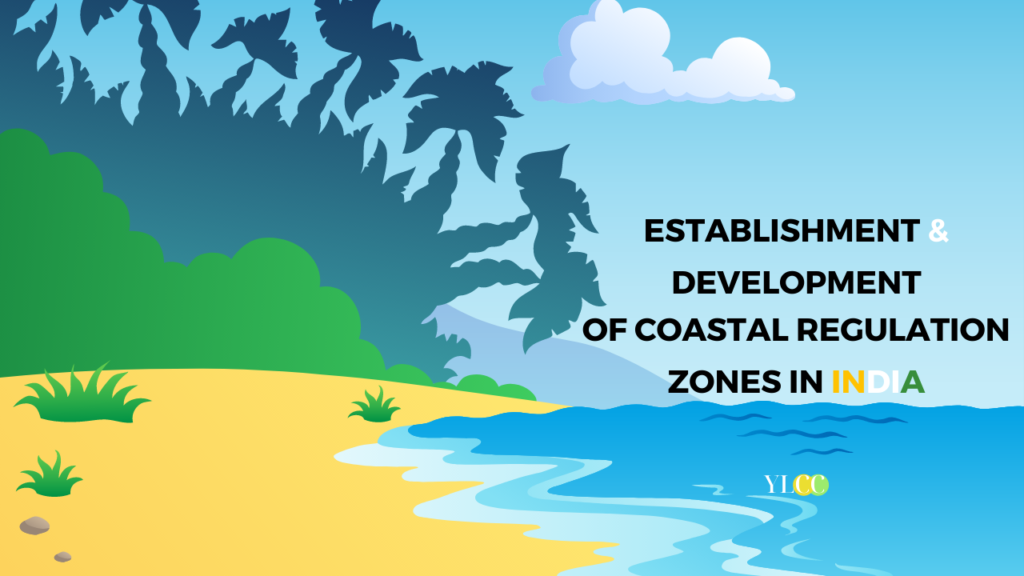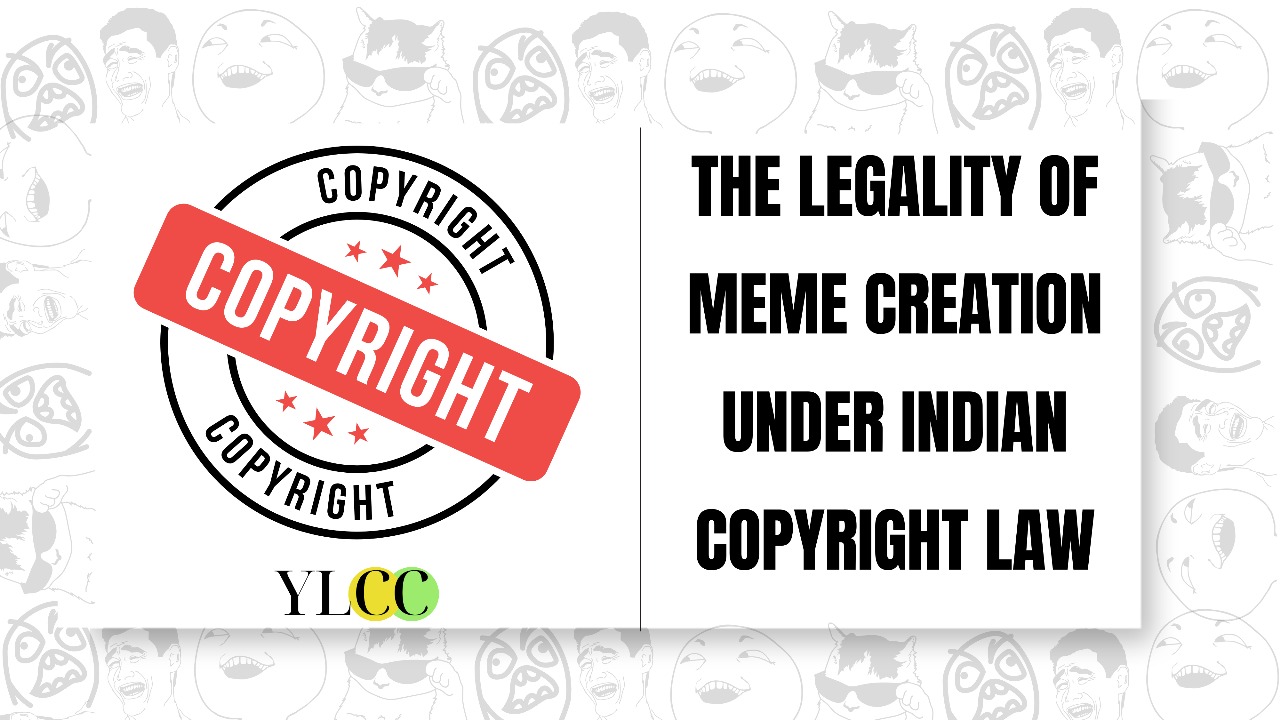
Meaning and definition.
The Coastal Regulation Zone (CRZ) comprises the coastal land upto 500m from the High Tide Line (HTL) and a stretch of 100m along the banks of creeks, estuaries, backwaters and rivers susceptible to tidal fluctuations. Tides are a phenomenon, caused due to the complementary positions of the Sun, Moon and the Earth. According to the intensity of the tide and its effect on the water line, the high and the low tide lines have been demarcated. The HTL or the High Tide Line indicates the line on land to which the highest waterline can reach during the Spring tide, which is an exceptionally high tide situation. On the other hand, Low Tide Line (LTL) can be understood to be the line on land to which the lowest water line can reach due to the occurrence of a Spring Tide.
Categories of CRZ.
The Coastal Regulation Zones have been categorised on the basis of the ecological constitution of the particular regions and only certain specific actions are permitted to be performed which are potentially not harmful to the environment. The categories and permitted activities are furnished below:
- Category I- The portion between the Low Tide Lines and the High Tide Lines comprises the Category I of CRZ. This includes the ecologically sensitive areas such as marines, parks, wild life sanctuaries, wild habitats, mangroves, areas in and around the breeding and spawning grounds for fish, areas possessing genetically rich biodiversity, areas under the danger of damages that can be caused due to a rise in the sea level, etc. these places are highly charged with the organic ecological elements.
However, there are restrictions on activities such as new establishments and construction, disposal of wastes, land filling in this area and activities like exploration of natural gas, extraction of salt, are permitted.
- Category II- The areas that are developed upto the shoreline of the coast constitutes the CRZ II. Developed Area refers to the area within the municipal limit or within the control of any other legal authority, substantiated with an infrastructure, a proper drainage system, sewage system, water supplies and other necessities for health and sanitation, there exists a city planning and is designated as an urban area.
There are restrictions on the permit of construction of building, there is a prohibition of any construction on the seawards side of the existing and the proposed road, all constructions of buildings are to be made considering the surrounding landscape and ecology and such buildings, whether existing or reconstructed will be subject to the local town or country planning rules.
- Category III- The areas that are not considered within Category I and II, constitute Category III. It includes the coastal regions of both developed and undeveloped areas, places within the Municipalities and the legally designated urban areas which might not be substantially built up for the purposes of the definition of a Developed area. There are restrictions imposed on the constructions on the stretch of land upto 200m of the HTL which is known as the ‘No Development Zones’. No new constructions are allowed within this area, only renovation of the existing structures is allowed. However, this portion of land can be used for horticulture, agriculture, pasture, gardening, parks, forestry, play-fields and manufacture of salt from the water body. Other construction of public facilities is permitted within the area between 200m and 500m of HTL.
- Category IV- CRZ includes the coastal regions of Andaman and Nicobar Islands and the areas which have not been included in Category I, II and III. There is a prohibition on construction of structures upto 200m of HTL and the ones within 200m and 500m are to be built in accordance with the local archaeological norms. The ecology of the coastal stretch must not be neglected.
Developmental activities pose a serious threat to the Coastal zones, which is why, certain specific restrictions have been imposed even further for the holistic protection of the Coastal Regulation Zones. Activities such as expansion of establishments and industries, the discharge of trade or domestic effluents, hazardous and chemical effluents, dumping of wastes in land pits, construction of structures that disturb the natural course of seas and rivers, activities which threaten the natural habitat of the marine life are absolutely prohibited.
Notification and reports on CRZ.
The Ministry of Environment and Forest has taken certain essential measures towards safeguarding the coastal line of India. The constant developmental activities pose a serious threat to the organic structure and integrity of the coastal region, which needs to be protected and restored to maintain the natural processes of life. Following are the measures that have been considered by the Government:
- Coastal Regulation Zone notification, 1991
Objective- The notification has been based on three underlying principles: an equilibrium between developmental activities and protection of environment, prohibition and regulation of activities which are inherently harmful for the coastal community and ecology and finally, the sustainable management of the coastal regions. The objectives of the notification have been derived from these principles which are as follows-
- To safeguard the interests, sustenance and livelihood of the coastal communities, both fishing and non-fishing. The coastal regions serve the natural habitat to several terrestrial and aquatic animals, measures are taken to preserve and conserve the conditions for their survival as well.
- The notification does not absolutely ban all activities but restricts the construction and establishments to an extent that does not attack the natural course of life on the coastal regions.
- Provision of protection to different categories of Coastal Regulation Zone depending on the ecological sensitiveness, thus, balancing development and environmental protection, which is the spirit of CRZ.
Implication- To cope with the changing times and increasing complexities of socio-economic needs, there were certain amendments brought to the notification of 1991, which had the following implications:
- Permission for construction of petroleum storage was allowed in CRZ II and III which meant construction in the No Development Zones and storage of petroleum and its products which inflicted danger to the coastal regions.
- Allowance for exploration of natural gas and other activities which would lead the government to acquire land and in turn the change in use of land would cause derogation of soil and misuse of land.
- The allowance for land reclamation for certain activities which were not defined meant that activities which could jeopardise the coastal ecology could make their way through.
- The setting up of non-polluting industries in the field of IT and other service sectors meant the establishment of Special Economic Zones in the Coastal Regulation Zones, leading to the excessive commercialisation of the same.
Shortcomings- The notification had its own shortcomings which are furnished as follows:
- The state governments, industries and the tourism sectors have neglected the notification and the flexible amendments have diluted its significance in the competition between economic development and environmental safeguards.
- The entire concept of CRZ is based on the concepts of HTL and LTL, however, there is no measure to properly demarcate the limits of these Lines. This makes it difficult to ascertain the Zones, hence, the failure of the notification.
- The Notification is supposed to be a predecessor to a Coastal Zone Management Plan, to be taken up by the Coastal States, however, the failure on the end of the States to do so has made the essence and existence of this document futile.
2. Swaminathan Committee Report, 2005
Objectives- The Swaminathan committee was constituted by the Ministry of Environment and Forest to look into the applicability, implementation and the necessary amendments that are required in the field of environmental law for the protection and recognition of CRZ. The objectives of the committee are furnished as follows:
- Review the reports and recommendations of the various committees on coastal regions and suggesting measures to bring a harmony between the national and international legal framework in relation to coastal regions.
- To identify, define and enlist the coastal zones and provide for demarcation of the same and protection of the integrity of the coastal ecology.
- To recommend necessary amendments in the notification of 1991, making it flexible enough to bring it in consonance with the international regime on environmental laws.
Recommendations- The recommendations were based on the objectives furnished below:
- It provides for a holistic approach towards the protection of coastal zones and the inclusion of marine and oceans into the province of such protection.
- The committee recommended for a coastal zone management policy that would take into account ecological, cultural, livelihood and national security[1].
- The implementation and inclusion of precautionary principle, public trust doctrine, sustainable development, intra and inter-generational equity in the environmental legislations.
- Biodiversity indexing, distinguishing between commercial and domestic needs, identification of ecologically sensitive areas and protection of archaeological sites were suggested.
- The proper allocation and optimum use of freshwater and groundwater in coastal regions are to be considered as well.
- Implementation of National Coastal Management Programme- The committee suggested separate wings in the Ministry of Environment and Forest, a National Board for Sustainable Coastal Zone Management and Coastal Zone Management dealing specifically with sustainable development and coastal zone management, respectively. However, it was observed that such separate wings in the State or the Union Government would be futile and thus, recommended that the existing legislations must be strengthened.
- National coastal management action plan- The committee suggests the formation of the National Coastal Zone Management Action Plan stating that these areas demarcate the administrative boundaries of the local self-governing bodies, which facilitate the processes of regulation and preparation of management plans on the basis of the knowledge of the coastal ecological system. Factors such as the wave action on the land, coastal vegetation and organisms, sand dunes, etc., form a part of the entire coastal zone, and hence a part of the plans. However, the process and responsibility of identification and declaration of the Ecologically Sensitive Areas do not solely rest upon the Ministry of Environment and Forest but on all the right-holders and stake-holders.
- The Swaminathan Committee lacked the discussion over subjects with the various committees constituted for the purposes of dealing with environmental issues and fails to provide a holistic review, report and recommendation for further developments. It also spoke of principles such as precautionary principle and polluter pays principle but failed to provide the remedy in a situation where the polluter is difficult to be identified.
3. Draft coastal management zone notification, 2008
- Its requirement- On the basis of the Swaminathan Committee report, the coastal management plan was formulated and the Central Government thus, entered into a loan bond with the World Bank with the following underlying motive:
- Sustainable growth and economic development with ecological and vulnerability mapping.
- Strengthening the national level approaches.
- Strengthening the state-level approaches.
- Project management policies.
The Government emphasised on coastal developments and initiated the Planning Commission Document for Inclusive Growth in which a chapter is dedicated to the Coastal Management Zone Notification.
- Integrated coastal zone management and plan- The CRZ notification of 1991 suggested for the making and implementation of the CZMP, and the same shall provide for the distinct areas constituting the categories of CRZ. However, due to the lack of guidelines for the making of CZMP, it failed to address certain significant criteria such as the HTL demarcation, the current activities being carried on in the coastal zones, the constitution and composition of the coastal areas, the State action towards CZMA, the disciplinary actions and punitive actions to be taken against the violators. Thus, CZMP and the subsequent ICZMP were merely status reports.
- Categories of coastal management zone- As per the CMZ categorisation of coastal zones there are three zones and as compared to the CRZ categorization, the protection policies for the coastal are and the coastal communities are quite relaxed. It speaks of essential development and needs of the local community to sustain the livelihood; however, these concepts have not been clearly defined. Thus, it exposes the coastal areas to potentially hazardous industrial or commercial activities in the name of development.
Coastal Regulation Zone Notification, 2011
- Inputs- The CRZ notification, 2011 was formulated for the protection and conservation of coastal regions, measures to be taken for developments in a sustainable manner considering the sea level rise and to provide a security to the fishing and local community residing in such areas. In that view, it advances certain necessary inputs which are as follows:
- Providing a secured livelihood to the fishing community and answering their grievances.
- Provisions for control and prevention of pollution of coasts with regard to the untreated effluents, solid wastes and dumping pits.
- An elaborate process for clearance for a commercial or industrial establishment which includes an Environment Impact Assessment, Risk Management, No Objection Certificate from the State Pollution Control Board.
- It also covers the islands of Andaman and Nicobar Islands and Lakshadweep Islands providing separate measures, recommendations and jurisdiction for protection and sustainable development.
- It has brought about changes in the permissible activities in the categorised regions, allowing certain amount of relaxation which enables both economic development and secured livelihood for the coastal community.
Coastal regulation zone notification 2018
- Amendments- Based on the six-member Shailesh Nayak committee report, the Coastal Regulation Zone Notification, 2018 was issued with certain amendments to the permissible activities in the coastal regions. The No Development Zone was reduced and activities such as housing infrastructure, redevelopment of slums, tourism, ports and harbours and fisheries related opportunities were provided by way of the 2018 Notification.
- Conclusion- The Government has taken steps for the betterment of the coastal areas considering the balance between economic development and environmental issues. However, the failure lies in the poor implementation of the projects. The lack of awareness among the common people has also fuelled the dangerous impacts of potentially hazardous industrial or commercial activities.
The significance of CRZ through the lens of case laws.
- Indian Council for Enviro-legal Action v Union of India[2] (1996) 5 SCC 281.
The Apex court observed that the State and the Central Government had failed to implement the CZMP. The laws existed but there has been an utter negligence in its implementation. The court stated that the relaxations that were allowed by way of the amendments made in 1994, in case of the permissible activities were unjustified and in certain cases the reduction of the No Development Zones were made to a level that could be considered as illegal. It directed the Central Government to establish State and National Coastal Zone Management Authorities which could facilitate the implementation of the 1991 Notification.
- S. Jagannath v Union of India[3] (1997) 2 SCC 87
The shrimp culture/ farming industry leads to pollution and degradation of mangroves, soil, water body, hampering the sustenance of the ecology at all. The way they carry on the business is violative of the constitutional provisions and other legislations as well. The court stated that the underlying objective of the CRZ notification is to safeguard the ecologically sensitive zones and preserving its aesthetic qualities and uses. Thus, the court prohibited the functioning of the industries, however, a close down of the traditional prawn farming was not ordered considering the inter-generational equity and the revenue it earned for the country.
- Vaamika Island v Union of India and Ors.[4] (2013) 8 SCC 760
In this case, the question arose whether the property constructed on CRZ I were within the legal boundaries or not. The court observed that the CRZ I, comprising of such zones that does not support such infrastructure and was in violation of the notification and other relevant legislations. Thus, the court had ordered for the demolition of the property in order to protect the organic structure of the ecology.
- The Goa Foundation vs Diksha Holdings Pvt. Ltd[5]
The construction of the beach resort within the CRZ I seemed to be detrimental to the ecological system, negatively influencing the entities that constituted the zone. The court thus, had to deny the construction, and held that there must be a harmony between economy and environment.
To conclude, it can be understood that even though there exists proper notification and amendments to it, there is a negligence in its implementation. In order to keep the laws flexible, somewhere the law makers allow such activities which makes the enactment of the law completely irrelevant. Thus, there must be a balance between flexibility and rationality in order to cope the needs of the changing world.
[1] EQUATIONS (2008), Coastal Regulation in India Why Do We Need a New Notification?, EQUATIONS, Bangalore, available at Coastal Regulation in India – Why do we need a new Notification – Apr 09 – EQUATIONS (indiaenvironmentportal.org.in)
[2] (1996) 5 SCC 281
[3] (1997) 2 SCC 87
[4] (2013) 8 SCC 760
[5] 1999 (2) BomCR 550
YLCC would like to thank Mouboni Banerjee for her valuable insights in this article.







